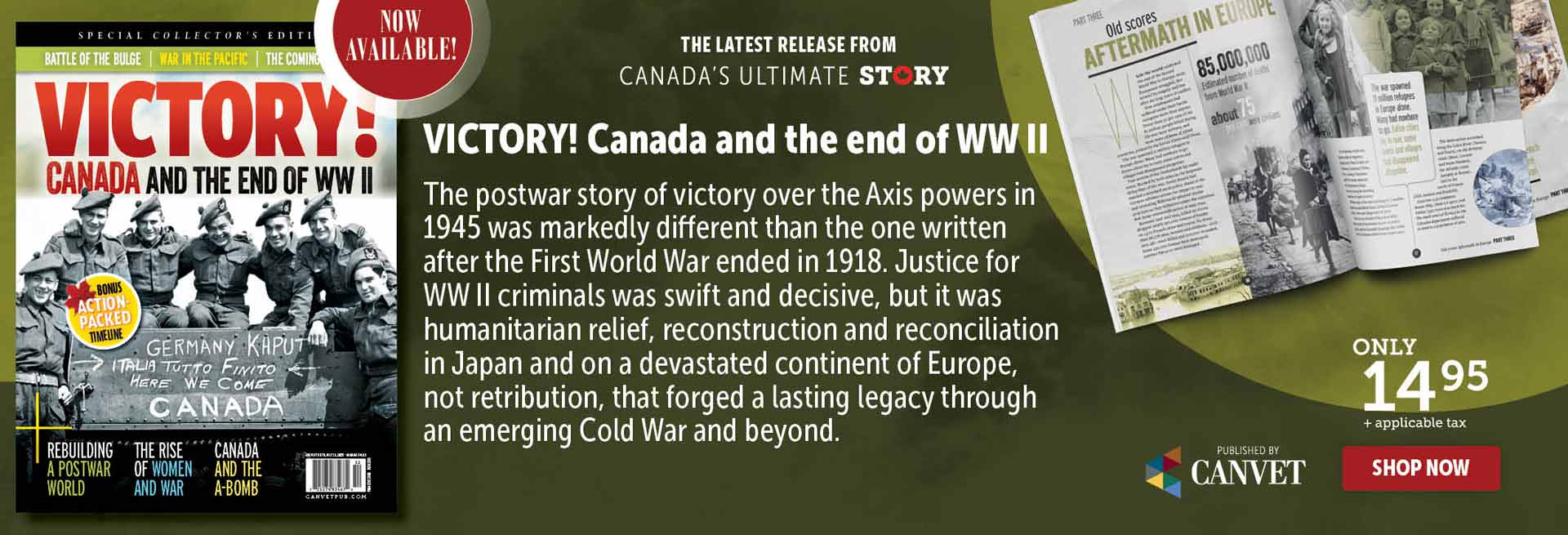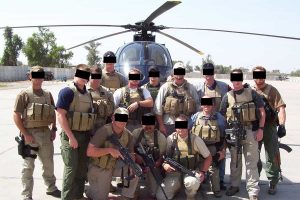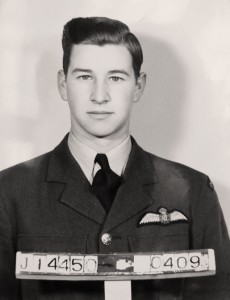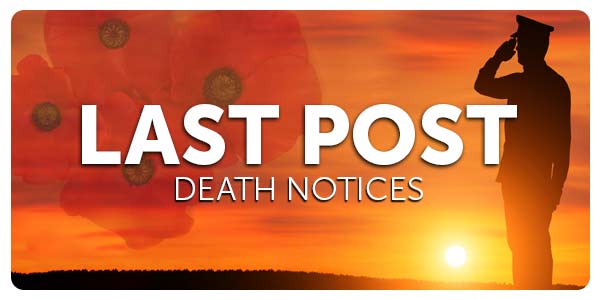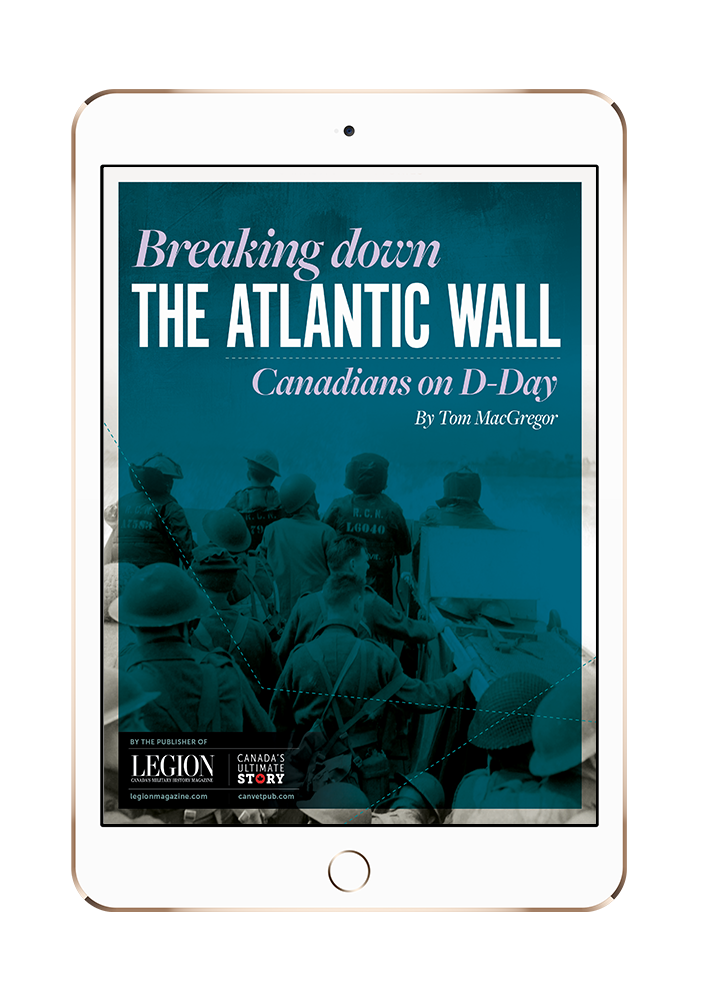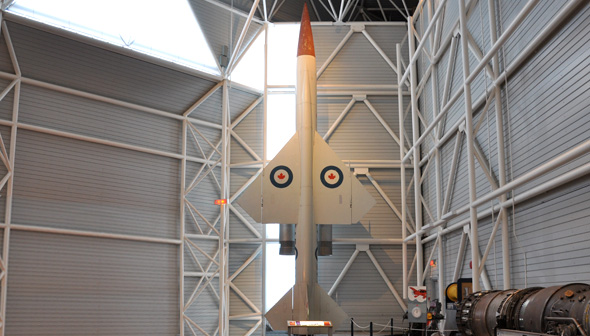
Now an artifact at the Canadian War Museum, the Boeing CIM-10B BOMARC was the first long-range anti-aircraft missile in the world. [CWM/Artifact number 1973.0009]
On Sept. 23, 1958, Prime Minister John Diefenbaker announced that under that agreement, two Royal Canadian Air Force squadrons were to be equipped with surface-to-air guided BOMARC anti-aircraft missiles.
But the prime minister failed to inform Canadians that the BOMARC missiles would have nuclear warheads. When the news broke in 1960, the country was plunged into a contentious military and moral debate.
Diefenbaker’s own cabinet was split on the issue, and anti-nuclear protests were held throughout the country.
Should Canada live up to its Norad obligations, or stand up in opposition to the spread of nuclear weapons?
Relations with the U.S. chilled as the debate raged.
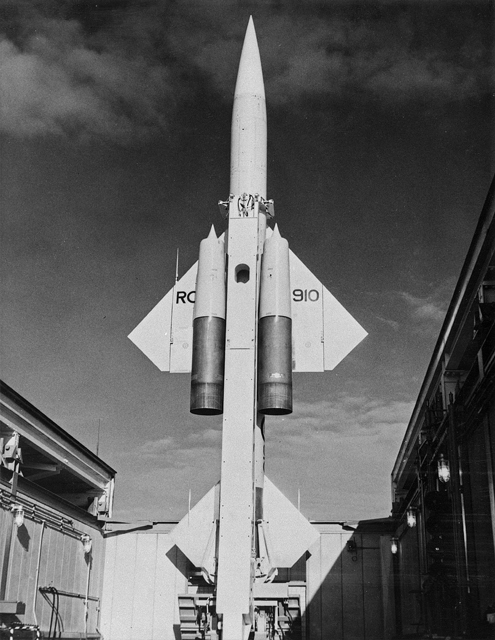
BOMARC missiles were deployed at two RCAF missile squadrons as part of NORAD from 1962 to 1972. [CWM/Artifact number 1973.0009]
“The Pearson policy is to make Canada a decoy for international missiles,” thundered Diefenbaker. Pearson countered that Canada must accept the BOMARC missiles because it had made a commitment to its allies.
When the Liberals won the election, Prime Minister Pearson decided Canada’s defence should have nuclear capability.
On Dec. 31, 1963, 56 BOMARC missiles with nuclear warheads were delivered to RCAF stations in North Bay, Ont. and La Macaza, Que. The warheads remained U.S. property.
Soon the nuclear threat moved from manned bombers to intercontinental ballistic missiles. Within a decade, the BOMARC’s were obsolete, and Canada signed the Nuclear Non-Proliferation Treaty, which came into force in 1970.
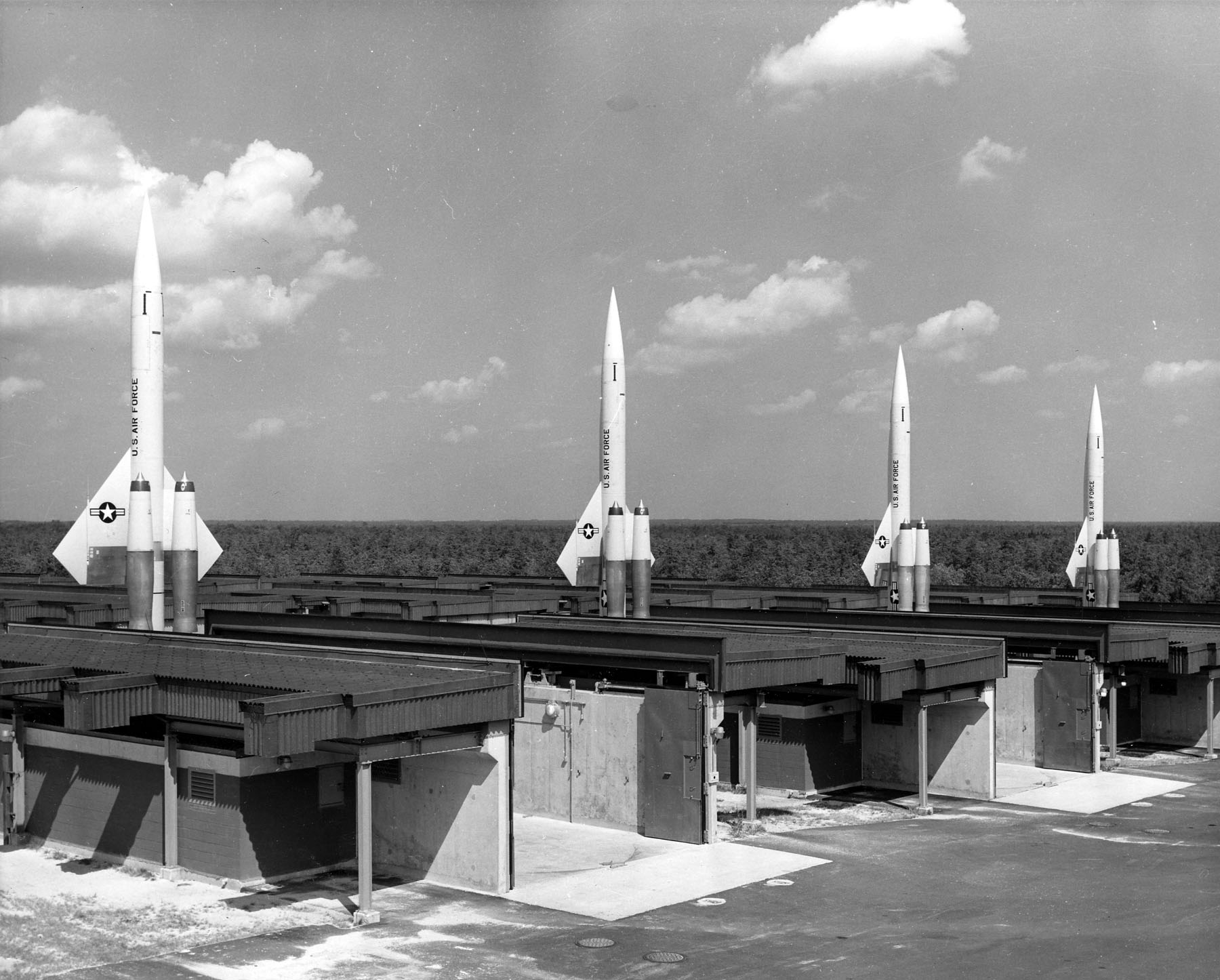
Four BOMARC missiles in place near McGuire Air Force Base in New Jersey in 1960. The missile’s name BOMARC is from the Boeing Airplane Company (BO) and the Michigan Aeronautic Research Center (MARC). [National Museum of the U.S. Air Force/090603-F-1234P-002]
For its own defence and safety, Canada remains a member of NATO, which has a program for sharing nuclear weapons among member countries without nuclear capability, and Norad (now called the North American Aerospace Defence Command), an alliance with one of the world’s nuclear superpowers.
To make the world safer, Canada simultaneously works to limit the threat of nuclear weaponry by actively participating in international nuclear disarmament and non-proliferation organizations, and by ratifying agreements to ban nuclear weapons testing.
Advertisement






